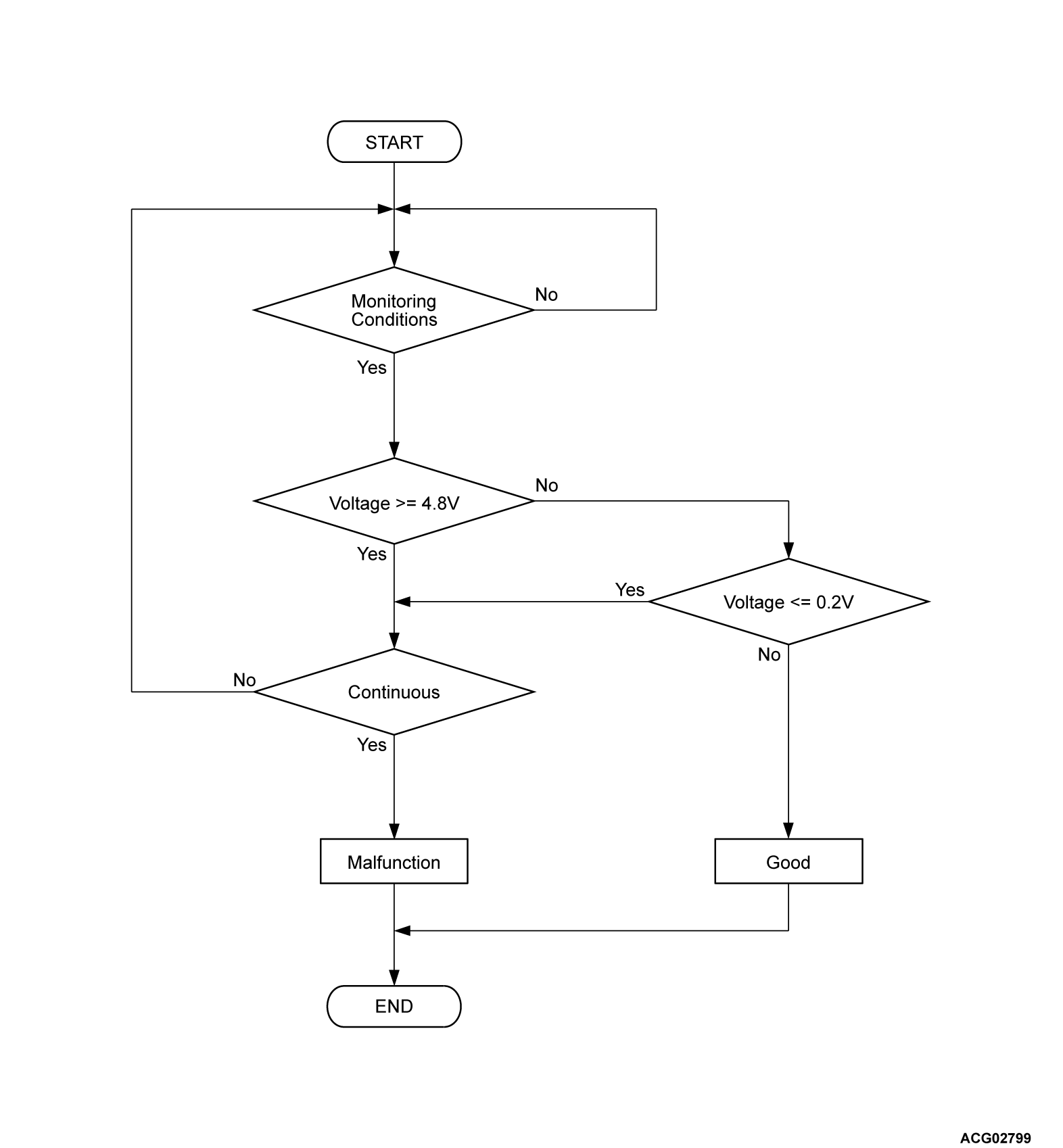DTC P1E00: PTC Heater TEMP. Sensor High
| caution | Whenever ECU is replaced, ensure that the CAN bus lines are normal. |
MONITOR EXECUTION
- Continuous
MONITOR EXECUTION CONDITIONS (Other monitor and Sensor)
Other Monitor (There is no temporary DTC set in memory for the item monitored below)
- Not applicable
Sensor (The sensor below is determined to be normal)
- Not applicable
DTC SET CONDITIONS
Check Conditions
- battery management unit (BMU) power supply voltage is 8 volts to 16 volts.
- Time after above conditions satisfy is more than 1 second.
Judgment Criterion
- Change of the main drive lithium-ion battery heater temperature sensor voltage is more than 4.8 volts for 2 seconds.
FAIL-SAFE AND BACKUP FUNCTION
- Not available
PROBABLE CAUSE
- The main drive lithium-ion battery heater temperature sensor is failed.
- Short circuits to power supply system of main drive lithium-ion battery cooling fan circuit; poor contact of connector.
- The battery management unit (BMU) is failed.
DIAGNOSIS
Required Special Tools
- MB991658: Test harness
STEP 1. Measurement the resistance at battery management unit (BMU) connector (HTS and GHTS terminal).
(1) Disconnect the battery management unit (BMU) and main drive lithium-ion battery connector, and measure at the wiring harness side.
(2) Check the resistance the battery management unit (BMU) connector between HTS terminal and GHTS terminal.
OK: No continuity
Is the check result normal
STEP 2. Check of short to power supply circuit in HTS or GHTS line between main drive lithium-ion battery connector and battery management unit (BMU) connector.
Is the check result normal
STEP 3. Measure the voltage at main drive lithium-ion battery connector.
(1) Disconnect the D-34 main drive lithium-ion battery connector, and measure at the wiring harness side.
(2) Turn on the power supply mode of the electric motor switch.
(3) Check the voltage between the D-34 main drive lithium-ion battery connector (HTS line) and body ground.
OK: 4.7 - 5.3 volts
(4) Check the voltage between the D-34 main drive lithium-ion battery connector (GHTS line) and body ground.
OK: 0.0 - 0.2 volt
Is the check result normal?
STEP 4. Check the main drive lithium-ion battery heater temperature sensor.
Check the main drive lithium-ion battery heater temperature sensor (refer to  ).
).
 ).
).Is the check result normal?
STEP 5. Check the main drive lithium-ion battery heater temperature sensor.
Is the check result normal?
![[Previous]](../../../buttons/fprev.png)
![[Next]](../../../buttons/fnext.png)


